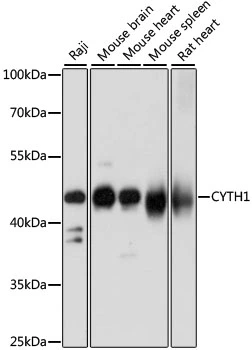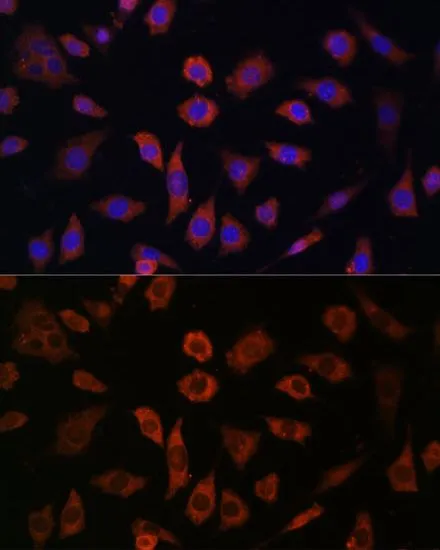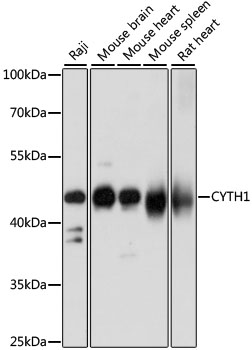
WB analysis of various sample lysates using GTX66363 Cytohesin 1 antibody. Dilution : 1:1000 Loading : 25microg per lane
Cytohesin 1 antibody
GTX66363
ApplicationsImmunoFluorescence, Western Blot, ImmunoCytoChemistry
Product group Antibodies
TargetCYTH1
Overview
- SupplierGeneTex
- Product NameCytohesin 1 antibody
- Delivery Days Customer9
- Application Supplier NoteWB: 1:200 - 1:2000. ICC/IF: 1:50 - 1:200. *Optimal dilutions/concentrations should be determined by the researcher.Not tested in other applications.
- ApplicationsImmunoFluorescence, Western Blot, ImmunoCytoChemistry
- CertificationResearch Use Only
- ClonalityPolyclonal
- ConjugateUnconjugated
- Gene ID9267
- Target nameCYTH1
- Target descriptioncytohesin 1
- Target synonymsB2-1, CYTOHESIN-1, D17S811E, PSCD1, SEC7, cytohesin-1, PH, SEC7 and coiled-coil domain-containing protein 1, SEC7 homolog B2-1, cytoadhesin 1, homolog of secretory protein SEC7, pleckstrin homology, Sec7 and coiled-coil domains 1
- HostRabbit
- IsotypeIgG
- Protein IDQ15438
- Protein NameCytohesin-1
- Scientific DescriptionThe protein encoded by this gene is a member of the PSCD family. Members of this family have identical structural organization that consists of an N-terminal coiled-coil motif, a central Sec7 domain, and a C-terminal pleckstrin homology (PH) domain. The coiled-coil motif is involved in homodimerization, the Sec7 domain contains guanine-nucleotide exchange protein activity, and the PH domain interacts with phospholipids and is responsible for association of PSCDs with membranes. Members of this family appear to mediate the regulation of protein sorting and membrane trafficking. This gene is highly expressed in natural killer and peripheral T cells, and regulates the adhesiveness of integrins at the plasma membrane of lymphocytes. A pseudogene of this gene has been defined on the X chromosome. Alternative splicing results in multiple transcript variants. [provided by RefSeq, May 2014]
- Storage Instruction-20°C or -80°C,2°C to 8°C
- UNSPSC12352203





![WB analysis of whole cell extracts (30 microg lysate) of Raji (Lane 1), Jurkat (Lane 2) and Hep G2 (Lane 3) using GTX22727 Cytohesin 1 antibody [2E11]. Dilution : 0.5-2 microg/ml](https://www.genetex.com/upload/website/prouct_img/normal/GTX22727/GTX22727_1576_WB_w_23060620_570.webp)
